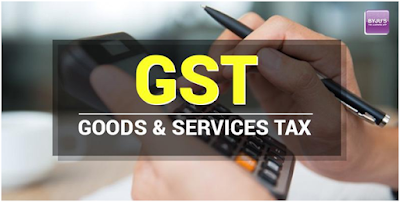Banking Awareness 2017 - All About Goods and Services Tax
The Current Affairs section for Bank Exams
like IBPS PO, SBI PO is a part of the General Knowledge
Syllabus. Due to vast topics, the candidates find it hard to score well in this
section. The candidate should stay up to date with the current affairs and read
the newspaper on a frequent basis to crack this section in competitive exams.
Here we talk about the current General Knowledge topic “GST Bill”
The Goods and Services Tax is a new system
proposing all the indirect taxation of India and merging it all into a single
system of taxation. It was introduced by The Constitution Act 2016. This GST
would be a comprehensive indirect tax on sale, manufacture and consumption of
goods and services throughout India, to replace taxes levied by the central and
state governments. GST was finally introduced in the country after a long
journey of 13 years since it was first discussed in the report of Kelkar Task
Force on indirect taxes.
Taxes at the Central and State Level that have
been subsumed:
Central level:
● Central Excise Duty
● Additional Excise Duty
● Service Tax
● Additional Customs Duty is commonly known as
Countervailing Duty
● Special Additional Duty of Customs
State level:
● Subsuming of State Value Added Tax/Sales Tax
● Entertainment Tax, Central Sales Tax
● Octroi and Entry tax
● Purchase Tax
● Luxury Tax
● Taxes on lottery, betting and gambling
The GST Council on 3 November 2016 approved
four tier tax structures 5, 12, 18 and 28 percentage under the proposed Goods
and Services Tax and one No Tax slab.
No tax slab:
1. Milk, buttermilk and curd
2. Meat, eggs, chicken, fish
3. Fresh fruits, Honey, Vegetables
4. Bread, Flour, Salt, Besan
5. Sindoor, Bindi
6. Judicial paper, Newspaper, Stamps, Printed
books
7. Handloom, Bangles
5% tax slab:
1. Fish fillet
2. Skimmed milk powder, cream, branded paneer
3. Frozen Vegetables
4. Tea, Spices, Pizza bread, Coffee, Rusk
5. Coal, Kerosene, Medicines, Lifeboat, Stent
12% tax slab:
1. Frozen meat products
2. Cheese, Ghee, Butter
3. Dry fruits in packaged form
4. Sausage, Animal fat, Fruit juices
5. Namkeen Snacks
6. Tooth Powder, Ayurvedic medicines, Incense
sticks
7. Picture Books, Colouring Books, Umbrella
8. Sewing machine, Cell phones
18% tax slab:
1. Pasta, cornflakes, cakes and pastries
2. Sauces, Preserved vegetables, Jams
3. Soups, Ice cream, Instant food mixes
4. Mineral Water
5. Tissues, Tampons, Envelopes, Notebooks
6. Printed circuit boards, Steel products
7. Speakers, Camera and Monitors
28% tax slab:
1. Chewing gum
2. Chocolate devoid of cocoa
3. Pan masala, Paint, aerated water
4. Deodorants, after shave and shaving creams
5. Dye, hair shampoo, sunscreen
6. Wallpaper, ceramic tiles
The aforementioned information helps the
candidates in their preparation for the current affairs section in bank exams.
The candidates should go through news portals and the IBPS guide to get more information about the pattern and syllabus of the
exam. The aspirants can also visit the Byju’swebsite to learn more tips and
strategies to crack the upcoming bank exams. For a better understanding of
topics, these aspirants can also subscribe to our Byju’s YouTube channel.
About the author:
Reuben Thomas Alex enjoys inspiring others through his writing and
blogging. After his engineering, he has chosen to work with many students and
to explore the opportunities of creating a better future in the field of
digital education. He has been able to motivate many with his passion towards
education in Byju’s-the Learning App.




कोई टिप्पणी नहीं:
एक टिप्पणी भेजें